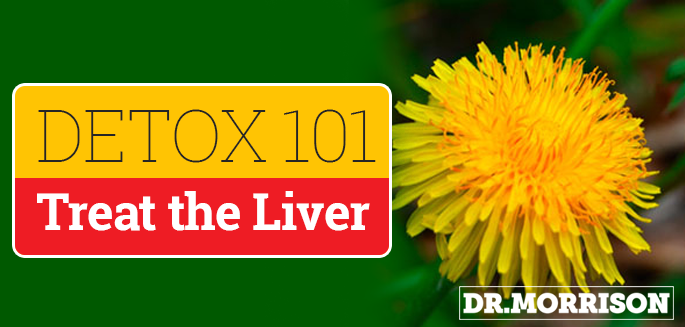
By Dr. Darin Ingels
An important part of any detoxification program is to ensure that the liver is functioning at an optimal level, since detoxification is its primary job. Herbs have a long historical use in purification and detoxifying the body. Modern research has shown that these herbs increase the production of bile salts and stimulate the flow of bile from the liver. Bile salts and bile bind to harmful toxins, allowing the body to eliminate them more easily. Herbs can be classified as those that stimulate the production of bile salts (choleretics) or those that stimulate the flow of bile from the liver (cholagogues). Both are essential for proper and healthy elimination of potentially dangerous toxins.
One of the most common choleretics that you can find in your backyard is dandelion (Taraxacum officinalis). Dandelion root is most effective in stimulating the liver, where dandelion leaf has only a mild effect. Picorrhiza (Picorrhiza kurroa) root is a traditional Ayurvedic herb that effectively stimulates bile salt production. Other studies suggest picrorrhiza is superior to milk thistle (Silybum marianum) in protecting the liver against toxic damage. A little known herb that is a useful choleretic is black root (Leptandra virginica). It has historically been used to help tonify a weak digestive tract, but the dried root is a mild stimulant to the liver.
Cholagogues work by stimulating the flow of bile from the liver and causing the gallbladder to contract, squeezing the bile into the intestinal tract. As a result, cholagogues have a mild laxative effect enhancing elimination. Burdock root (Arctium lappa) is one of our most important cholagogues. You can buy the root at most grocery stores, cut it into small pieces and boil it in water for 30-60 minutes. It makes a pleasant tasting tea that can be consumed on a regular basis. Yellow dock (Rumex crispus) is a gentle intestinal tonic, which also helps relax the bile duct, making it useful in cases of gallstones or liver congestion (commonly known as fatty liver). The root bark of Fringetree (Chionanthus virginicus) has historically been used to treat liver congestion, jaundice, constipation and gallstones. It also has an effect on liver and pancreas stimulation and has been used as a preventive treatment for diabetes. Another traditional cholagogue is Greater Celandine (Chelidonium majus). In addition to stimulating the liver, it is also useful in treating gallbladder colic.
Detoxification has been an important part of health maintenance for many cultures around the world and herbs have traditionally been a significant part of this process. Improving the production and flow of bile through the liver can help eliminate dangerous toxins while improving one’s state of health. It is always important to consult your own healthcare provider regarding dosing and to ensure that these herbs are right for you.